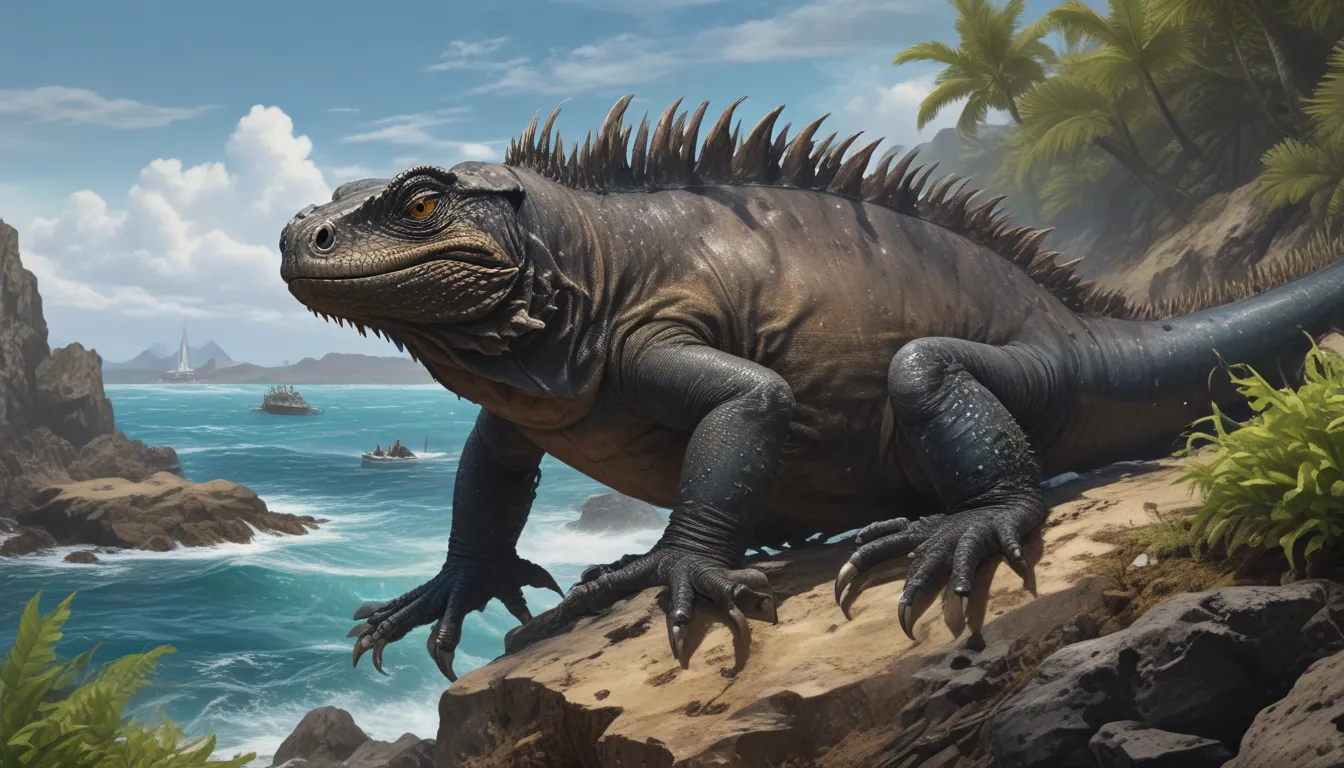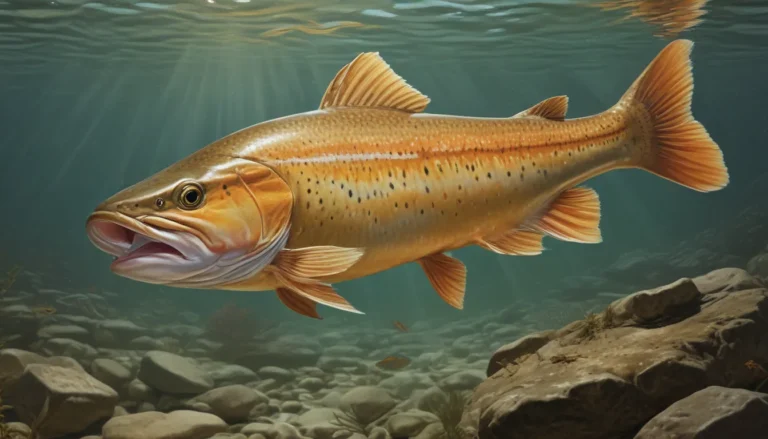The pictures we use in our articles might not show exactly what the words say. We choose these pictures to make you interested in reading more. The pictures work together with the words but don’t take their place. The words still tell you the important facts.
Welcome to the enchanting world of the marine iguana, a unique creature that calls the Galápagos Islands home. These captivating reptiles have intrigued wildlife enthusiasts and researchers with their exceptional adaptations and intriguing behaviors. In this article, we will explore 16 fascinating facts about marine iguanas, shedding light on their remarkable features, evolutionary marvels, and vital role in the ecosystem. Whether you are a seasoned wildlife aficionado or simply curious about the wonders of the natural world, these insights will reveal the mesmerizing secrets of these extraordinary reptiles and leave you in awe of their existence. Let's embark on a journey to uncover the enchanting world of marine iguanas.
Delving Into the World of Marine Iguanas
The Galápagos Islands serve as the unique habitat for the marine iguana, a truly remarkable creature that has captured the attention of scientists and nature enthusiasts alike. These intriguing reptiles have evolved distinct traits and behaviors that set them apart from other species. Let's dive into 16 fascinating facts about marine iguanas that showcase the extraordinary world of these captivating creatures.
The Unique Ocean Explorers: Marine Iguanas
Unlike any other lizards in the world, marine iguanas have adapted to forage in the ocean, showcasing their remarkable ability to swim and dive for algae. This unique trait allows them to exploit a niche that no other reptile can occupy, making them truly exceptional ocean explorers.
Masterful Breath-Holding Abilities of Marine Iguanas
When marine iguanas dive for algae, they can hold their breath for an astonishing 30 minutes. This impressive breath-holding capacity enables them to access food sources that are otherwise unreachable to other herbivores, demonstrating their exceptional evolutionary traits and resilience.
The Spectacular Color Transformations of Breeding Marine Iguanas
During the breeding season, male marine iguanas undergo a striking color transformation, with their skin and scales turning vibrant shades of red and green. This dazzling display of colors plays a crucial role in attracting mates and establishing dominance within the population, highlighting the captivating nature of their breeding rituals.
Endemic Wonders: The Marine Iguanas of the Galápagos Islands
Found exclusively in the Galápagos Islands, marine iguanas are a symbol of the region's unique biodiversity. Their isolated habitat has driven the evolution of distinct characteristics, making them a true emblem of the Galápagos ecosystem and reflecting the intricate relationship between species and their environments.
Environmental Vulnerability of Marine Iguanas
Amidst environmental challenges faced by the Galápagos Islands, marine iguanas are particularly susceptible to disruptions in their habitat. Their specialized foraging and nesting sites make them sensitive to changes in ocean temperature and food availability, underscoring the fragile balance of their existence and the need for conservation efforts.
Evolutionary Adaptations: The Salt-Secreting Glands of Marine Iguanas
To thrive on a diet of marine algae, marine iguanas have evolved specialized salt-secreting glands that expel excess salt from their bodies. This unique adaptation enables them to thrive in an environment where freshwater sources are scarce, showcasing their remarkable physiological resilience and resourcefulness.
Proficient Swimmers: The Aquatic Skills of Marine Iguanas
Despite their primarily terrestrial habits, marine iguanas are excellent swimmers, using their powerful tails to propel themselves through the water with agility. Their streamlined bodies and strong limbs allow them to navigate the coastal waters in search of nourishing algae beds, highlighting their adaptability and aquatic prowess.
Sunbathing Behavior of Marine Iguanas
After foraging in the cold ocean waters, marine iguanas rely on basking in the sun to regulate their body temperature. This sunbathing behavior helps them maintain optimal metabolic functions and prepares them for their next aquatic foraging expeditions, showcasing their ability to adapt to the demands of their environment.
Contribution to Ecosystem Balance: The Herbivorous Diet of Marine Iguanas
As herbivores, marine iguanas play a crucial role in maintaining the balance of the Galápagos ecosystem by consuming algae and preventing overgrowth in coastal areas. Their ecological significance as primary consumers influences the dynamics of marine habitats, emphasizing their vital role in the biodiversity of the island chain.
Facing Natural Predators: The Challenges for Marine Iguanas
Despite their unique adaptations, marine iguanas face predation from native and introduced species on the Galápagos Islands. Natural threats such as hawks and snakes pose challenges to their survival, highlighting the ongoing struggle for these remarkable reptiles in their native environment and the resilience required to thrive in the face of adversity.
Elaborate Social Behaviors of Marine Iguanas
During the breeding season, male marine iguanas engage in elaborate displays to establish dominance and attract potential mates. These intricate social behaviors provide a captivating insight into the complex interactions that shape the reproductive success of these iconic reptiles, highlighting the sophistication of their breeding strategies.
Testaments to Evolution: The Marvels of Marine Iguanas
The existence of marine iguanas stands as a powerful testament to the evolutionary marvels that have unfolded in the Galápagos Islands over millennia. Their unique adaptations and ecological significance embody the principles of natural selection and the intricate interplay between species and their environments, showcasing the ongoing processes of evolution and adaptation.
Scientific Inquiry and Marine Iguanas
Scientists and researchers are continually fascinated by the biological complexities of marine iguanas, using them as a model for studying evolutionary processes and ecological dynamics. Their distinct traits and behaviors offer valuable insights into the mechanisms driving adaptation and speciation in island ecosystems, providing a window into the workings of nature's evolutionary wonders.
Ecotourism and the Appeal of Marine Iguanas
The allure of observing marine iguanas in their natural habitat has fueled the growth of ecotourism in the Galápagos Islands. Visitors are drawn to the opportunity to witness these captivating creatures in their element, fostering an appreciation for the conservation of the unique island ecosystem and the remarkable species that call it home.
Conservation Ambassadors: Marine Iguanas
Through their symbolic presence in the Galápagos Islands, marine iguanas serve as ambassadors for conservation efforts aimed at preserving the region's biodiversity. Their significance underscores the importance of safeguarding fragile ecosystems and the extraordinary species that inhabit them, inspiring a commitment to protecting the natural world and its inhabitants.
In exploring the "16 Fascinating Facts About Marine Iguanas," we gain a deeper understanding of the remarkable world of these unique reptiles and their ecological significance. As guardians of the Galápagos Islands, marine iguanas epitomize the delicate balance of nature and the enduring legacy of evolutionary exploration. Their captivating traits and behaviors offer a glimpse into the diversity and ingenuity of life on Earth, inviting us to appreciate the wonders of the natural world and the complex web of life that surrounds us.
FAQs
What is the main food source for marine iguanas?
Marine iguanas primarily feed on marine algae, such as red and green algae, which they forage for in the intertidal zones and underwater areas of the Galápagos Islands.
How do marine iguanas expel excess salt from their bodies?
Marine iguanas have specialized salt glands located near their noses that enable them to expel excess salt ingested from seawater, allowing them to maintain a balanced internal salt concentration.
As you delve into the enthralling world of marine iguanas, remember that each fact shared is a contribution from real users like you, ensuring a diverse range of insights and information. Our dedication to providing trustworthy and engaging content drives our commitment to accuracy and reliability, guaranteeing that the facts we share are both fascinating and credible. Trust in our pursuit of quality and authenticity as we continue to explore and learn together.






